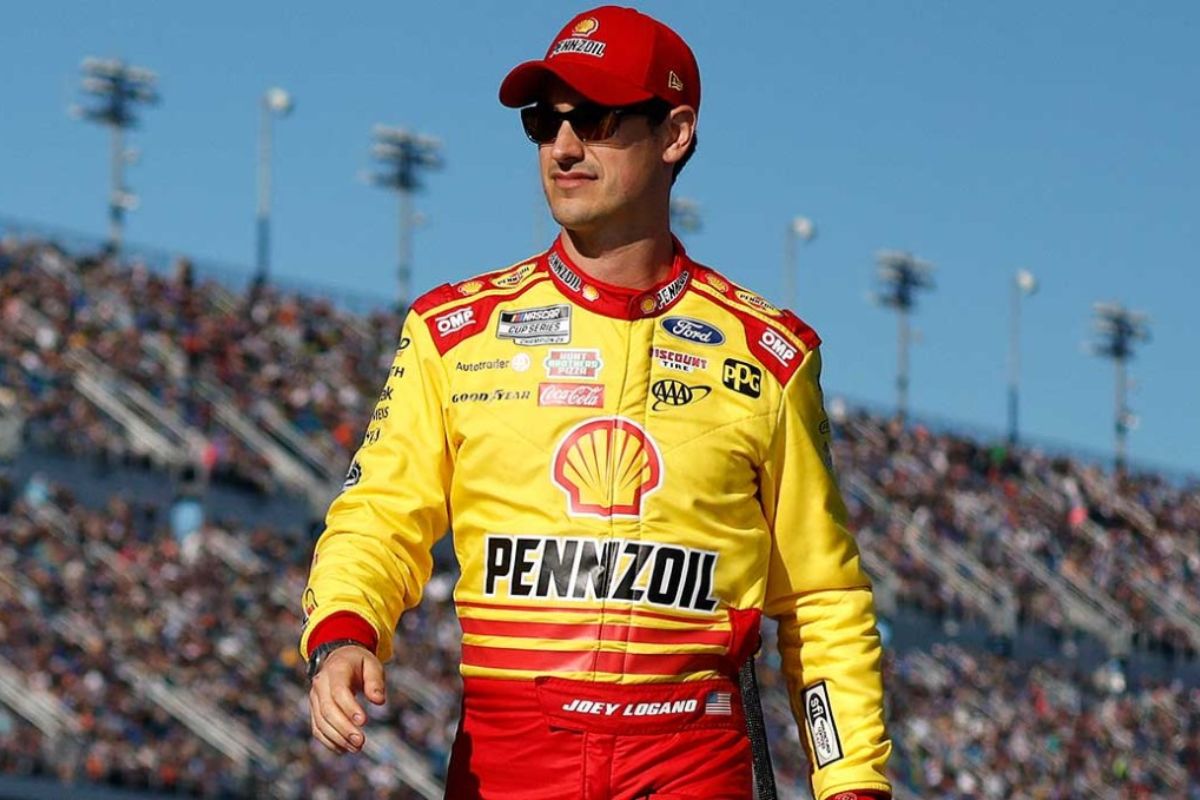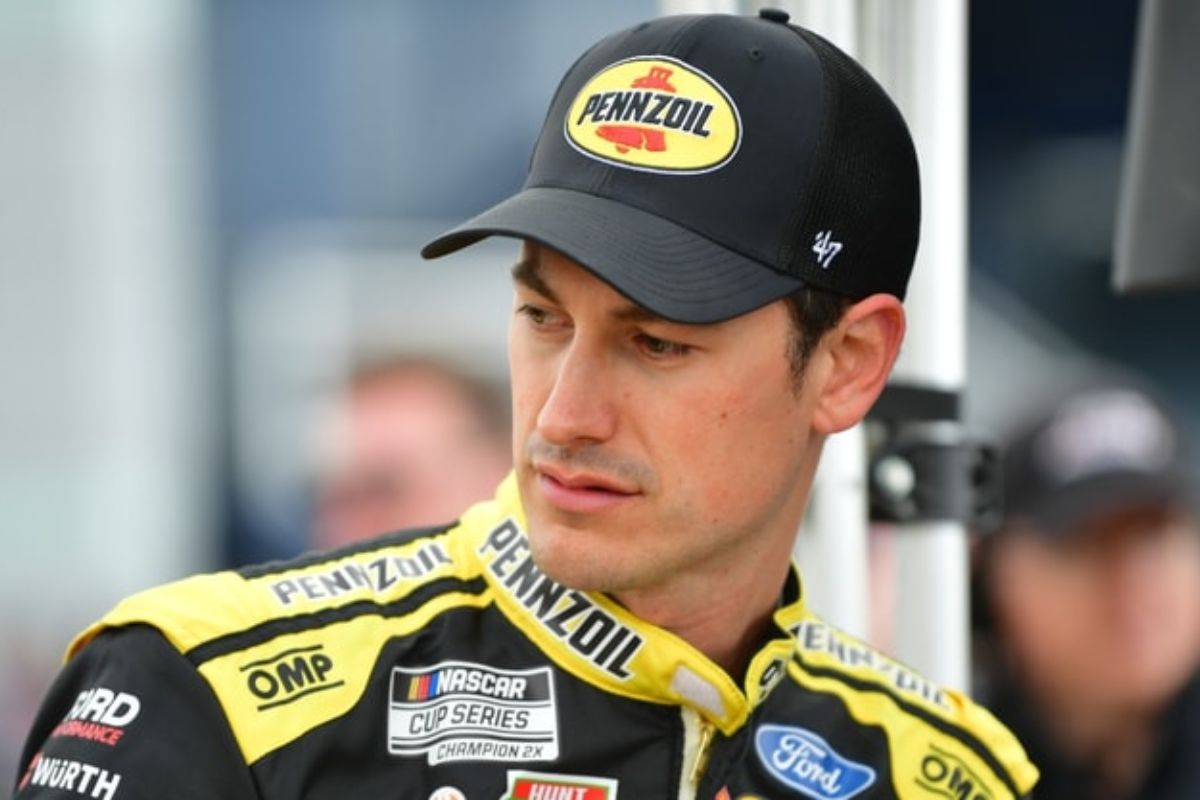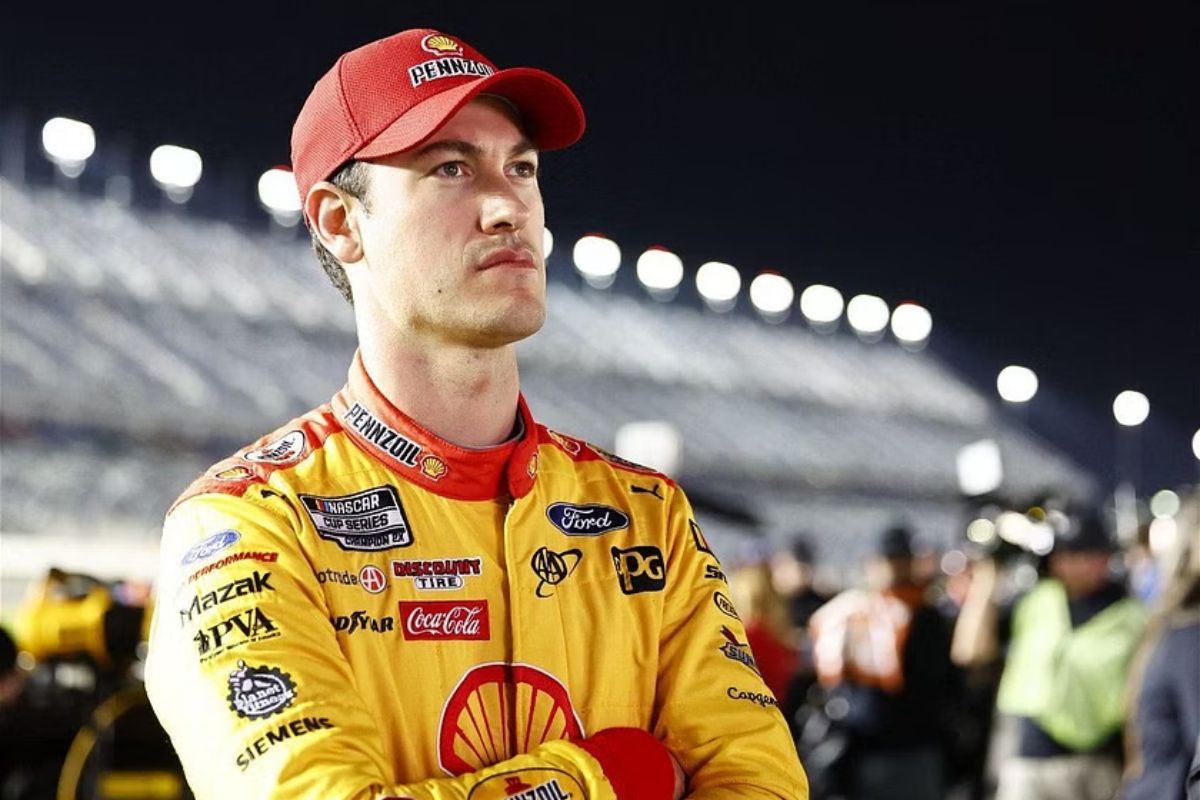Joey Logano Blasts Goodyear: As the debate over tire performance versus durability escalates within the NASCAR community, Joey Logano’s recent criticisms of Goodyear have brought the issue into focus, particularly concerning short track racing. By prioritizing tire longevity over ideal grip, Goodyear has raised concerns about the impact on race quality and driver safety, a balance that is essential to the sport’s integrity. Logano’s pointed remarks not only challenge the status quo but also invite a broader discussion on the need for a reevaluation of tire specifications that align more closely within the parameters of competitive racing.
Key Takeaways
- Joey Logano criticizes Goodyear for prioritizing tire durability over performance, impacting short track racing quality.
- Logano’s critique stems from issues like tire de-lamination, affecting tire integrity and performance, particularly on short tracks.
- NASCAR acknowledges tire performance challenges on short tracks, indicating a broader issue affecting the racing experience.
- The critique prompts discussions on finding a balance between tire safety, competition, and enhancing the racing spectacle.
- Team Penske, including Logano, participates in Goodyear tire tests to address and strategize around ongoing tire wear challenges.
NASCAR Acknowledges Short-Track Tire Challenges
Facing increasing criticism from drivers, NASCAR has openly acknowledged the challenges associated with tire performance on short tracks, signaling a commitment to addressing the concerns highlighted during the recent race at Martinsville Speedway. This acknowledgment, coming from Elton Sawyer, NASCAR’s senior vice president of competition, highlights the organization’s recognition of the issues at hand and its intent to intensify efforts towards enhancing the racing experience on short tracks.
The specificity of the Martinsville Speedway incident sheds light on a broader issue that has been floating within the sport, impacting not just the drivers but potentially the quality of racing and, by extension, fan engagement.
The core of the dissatisfaction stems from the tires’ inability to perform effectively on short tracks, a scenario that places drivers at a significant disadvantage, affecting their ability to compete efficiently. This issue not only impacts the competitive integrity of the races but also raises questions about the safety and reliability of the equipment provided to the teams. The acknowledgment by NASCAR’s senior vice president of competition is a turning point, indicating a shift towards a more analytical and proactive approach in addressing the technical challenges faced by the sport. It suggests a readiness to collaborate closely with stakeholders, including tire manufacturers and teams, to undertake a thorough review of the current tire specifications and performance metrics.
Joey Logano’s Critique of Goodyear Tires
Two-time Cup Series champion Joey Logano has publicly expressed his dissatisfaction with Goodyear, criticizing the tire manufacturer for prioritizing durability over performance, a decision that he believes greatly hampers NASCAR teams on short tracks. This critique stems from a broader discussion within the racing community about the balance between tire longevity and its ability to provide the grip and wear levels that drivers need for the best performance during races.
“It’s a fine line. Think about it. If you are Goodyear and the storyline is these tires are coming apart or they’re wearing out quickly, well, then you would say, ‘I don’t want to put that on my car.’ We have to somehow separate our street wants vs. our race car wants. We had 180-something laps on our left sides, and it finally started chunking apart at the end.” (Joey Logano)
Logano’s critique is not merely a matter of personal preference but is rooted in a fundamental aspect of race strategy and car handling. On short tracks, the ability of tires to degrade in a predictable and manageable manner is vital for creating dynamic racing conditions. It allows drivers to push their cars to the limit while also demanding a high level of skill to manage tire wear over the course of a race. By focusing on durability, Goodyear may inadvertently be stifling the very elements that make short-track racing thrilling both for drivers and spectators.
Logano’s Insights on Tire Wear
Despite his success on various tracks, Joey Logano has shed light on significant tire wear issues, particularly noting the challenges posed by tire de-lamination during critical moments of a race, as experienced in the final laps at Martinsville. This phenomenon reflects a broader concern within the racing community about the adaptability and durability of racing tires in high-stress environments. Logano’s insights are not merely anecdotal but highlight a systemic issue that affects performance, strategy, and, ultimately, race outcomes.
Tire de-lamination, as described by Logano, is a process where the tire’s layers separate, compromising the structural integrity and performance capabilities of the tire. This issue is particularly pronounced on short tracks like Martinsville, where the combination of high speeds, tight corners, and heavy braking zones places extraordinary demands on tires. The de-lamination Logano experienced brings attention to a critical discrepancy between the design and manufacturing of racing tires versus the actual demands placed on them during a race.
Team Penske’s Response and Strategies
In response to ongoing tire wear challenges, Team Penske, with Joey Logano at the forefront, has taken proactive measures, including participation in a Goodyear tire demonstration, to refine strategies and car setups aimed at enhancing tire management and performance in future races. This initiative is spearheaded by Logano’s crew chief, Paul Wolfe, who has been instrumental in dissecting the intricacies of tire wear and its impact on race outcomes. The commitment shown by Team Penske highlights a methodical approach to addressing the complexities associated with tire degradation, a concern that has permeated the short track racing scene.
“Bristol was good because the tire came apart. And that was good. Richmond and Martinsville, gosh, we got to swing the bat. We’ve got to do something big to fix it. I hate saying it, but we’re not an aero package away anymore. We’ve tried that, we’ve hit that button a few times. We’ve got to do something to make the tires fall off. I get it. Listen, here’s the deal, Goodyear has built a tire that is too good. If you’re looking to buy a tire on the street. That’s the tire you want. You want the tire that is going to last forever.. But that’s not what we want as racers.”-(Team Penske)
The participation in the Goodyear tire demonstration is a reflection of Team Penske’s dedication to not only identify the root causes of accelerated tire wear but also to pioneer solutions that could benefit the broader racing community. By leveraging the insights gained from these demonstrations, Wolfe and his team are meticulously adjusting car setups, focusing on optimizing tire pressure, suspension settings, and weight distribution to mitigate the adverse effects of tire wear. This analytical endeavor aims to strike a delicate balance between aggression and conservation, ensuring that their strategies are both competitive and sustainable over the race distance.
News in Brief
The criticism by Joey Logano of Goodyear’s tire durability versus performance has brought to light a significant issue within NASCAR’s short-track racing dynamics. This situation highlights the importance of a delicate balance between tire longevity and grip to guarantee competitive and entertaining races without compromising safety.
The response from Team Penske and the broader NASCAR community indicates a collective effort towards reevaluating tire specifications to address these concerns, emphasizing the significance of continuous innovation and adaptation in motorsport technology and strategy.
Our Reader’s Queries
Q. How fast is Joey Logano?
A. During NASCAR Cup Series practice at Phoenix Raceway in Arizona on Friday afternoon, Joey Logano of Team Penske recorded the fastest lap. Driving the No. 22 Ford, Logano navigated the one-mile, tri-oval track in 27.446 seconds, achieving a speed of 131.167 mph.
Q. Has Joey Logano ever won?
A. The victor of the inaugural Cup Series race at Gateway in 2022, and also triumphed in the inaugural Bristol Dirt Race in 2021. Additionally, boasts five appearances in the NASCAR Championship Four (in 2014, 2016, 2018, 2020, and 2022), and had amassed 32 career NASCAR Cup Series victories as of entering 2024.
Q. Why does Logano wear glasses?
A. “They help me see far away, which I think is a good thing when you are driving a race car. Being able to see little things like debris on the track or your sign on pit road. That seemed to help me last week.”
ALSO READ: Joey Logano’s Hypocrisy Exposed: NASCAR’s Last Survivor Reveals Truth!


